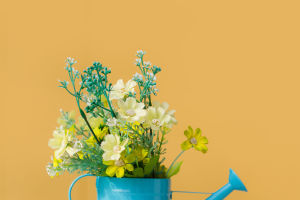In modern urban life, indoor potted plants have become popular for many people to beautify their home environment and improve their quality of life.
However, whether indoor potted plants need sunlight often triggers discussion and confusion. Sunlight is one of the important factors for plant growth. Still, not all indoor plants need direct sunlight.
First, sunlight is necessary for photosynthesis. Photosynthesis is the process by which plants absorb light energy through chlorophyll and convert carbon dioxide and water into glucose and oxygen.
This process provides plants with the energy they need to grow. Therefore, for most plants, sunlight is indispensable. However, indoor lighting conditions are relatively weak and unstable, posing new challenges to plant growth.
Indoor plants can be roughly divided into two categories: sun-loving and shade-tolerant plants. Sun-loving plants need sufficient sunlight to grow normally. These plants include succulents, cacti, aloe vera, etc. They originally grew in sunny environments and adapted to high-light conditions.
If they lack sunlight for a long time, the leaves will become slender and dull in color, which may even cause the death of the plants. Therefore, for such plants, it is best to place them near windows and in well-lit areas to meet their needs for sunlight.
In contrast, shade-tolerant plants can grow well under lower light conditions. Common shade-tolerant plants include ivy, pothos, and monstera, which are usually native to the lower layers of forests and have adapted to darker environments.
When maintaining such plants indoors, although direct sunlight is not required, appropriate diffuse light is still necessary. They can be placed a little further away from the window, or artificial light sources can be used to supplement the light.
When maintaining potted plants indoors, the intensity and duration of light need to be considered. Generally speaking, indoor light can be divided into three types: direct light, diffuse light, and low light. Direct light refers to sunlight shining directly on the plant, which is usually of high intensity and suitable for sun-loving plants.
Diffuse light is light reflected and filtered by objects such as windows and curtains, with moderate intensity, suitable for most indoor plants. Low light refers to an environment with less or almost no sunlight, which is often seen deep in the room or in windowless areas. Plant selection in such environments requires extra caution.
In addition to natural light, artificial light is also an important source of light for indoor potted plants. For rooms with insufficient light, artificial light sources such as fluorescent lamps and LED lamps can supplement the light.
These lamps can simulate the spectrum of natural light and promote the growth of plants. When choosing artificial light sources, you need to pay attention to the color temperature and light intensity of the light source to ensure that the plants can get sufficient and appropriate light.
Another issue that needs attention is the uniformity of light. The light in the indoor environment is often uneven, with strong light in some places and darker light in others.
Therefore, rotating the plant pots regularly is an effective way to allow all parts of the plant to receive light evenly and avoid the situation where one side grows too fast and the other side grows slowly.
Overall, the demand for sunlight for indoor potted plants varies depending on the type of plant. Sun-loving plants need plenty of sunlight, while shade-tolerant plants can grow under lower light conditions. But no matter what kind of plant, proper light is indispensable.
By arranging the position of plants reasonably, using natural light and artificial light sources, and maintaining the uniformity of light, the light needs of indoor plants can be effectively met and their healthy growth can be promoted.
Understanding and mastering this knowledge can not only make indoor potted plants more beautiful but also improve our gardening skills and quality of life.
The relationship between indoor potted plants and sunlight is complex and multifaceted. While sunlight is crucial for photosynthesis and the overall growth of plants, not all indoor plants require the same amount of light.
Sun-loving plants like succulents, cacti, and aloe vera thrive in well-lit environments and should be placed near windows to receive sufficient sunlight.
On the other hand, shade-tolerant plants such as ivy, pothos, and monstera can grow well in lower light conditions and do not require direct sunlight. These plants can be placed further away from windows or in areas with diffuse light.


